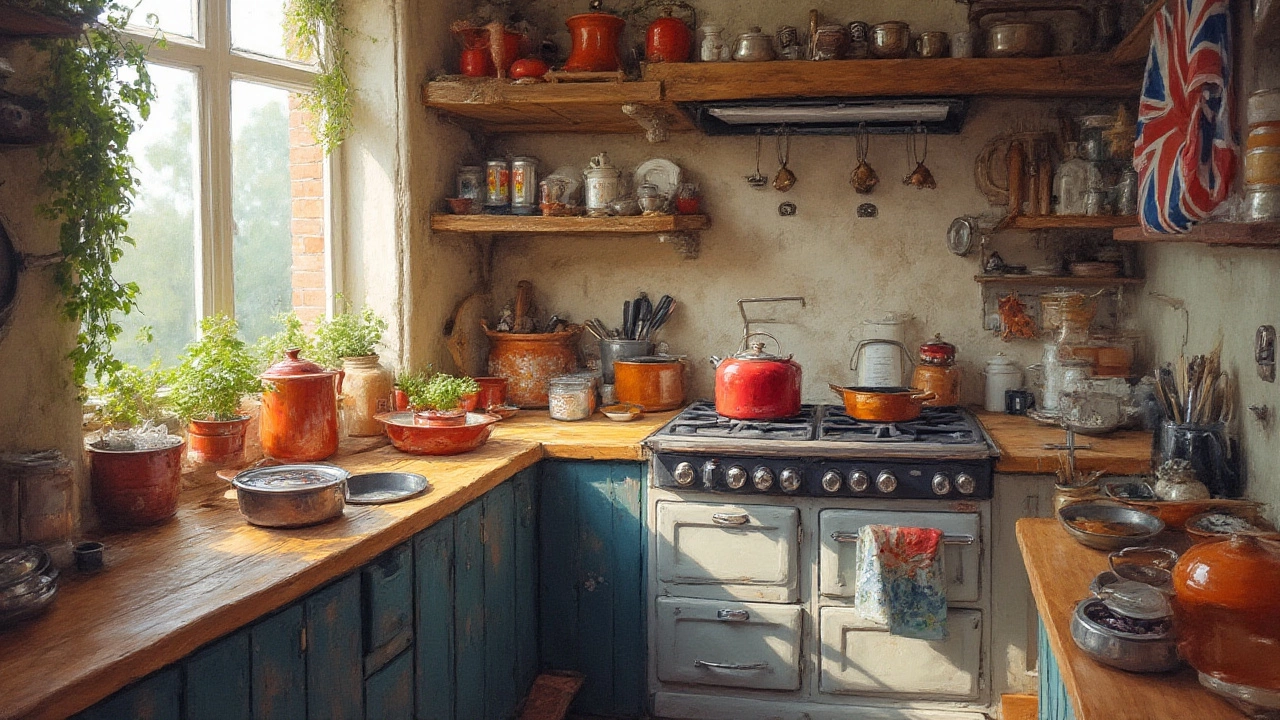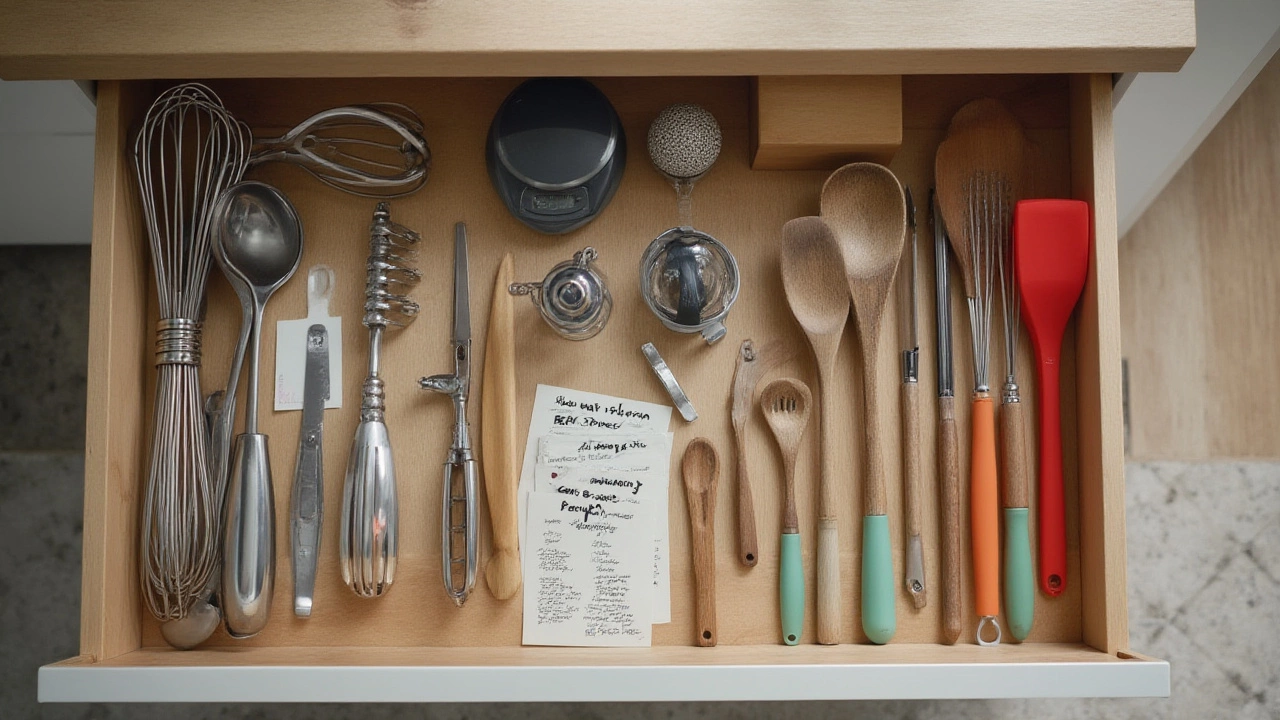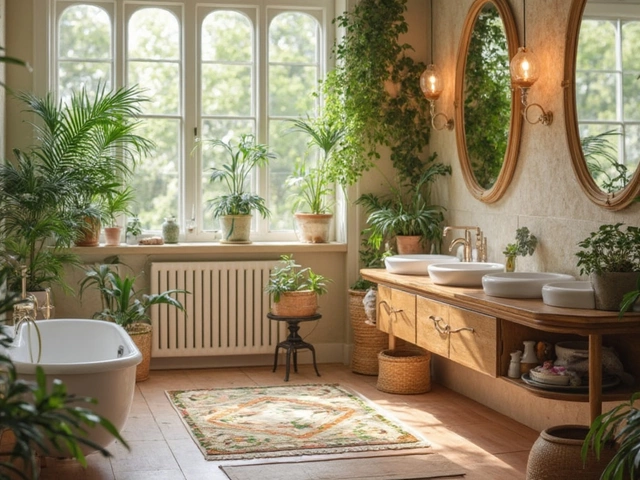Kitchenware Explained: Types, Uses, and Essential Tips for Every Kitchen

Ever walked into a store and stood there frozen, staring at the mountain of kitchen gadgets—unsure what's truly kitchenware and what’s just fancy clutter? You’re definitely not alone. Let’s get real: the line between what's essential, what’s nice-to-have, and what's basically useless is super blurry. Pair that confusion with a wave of new products that hit the shelves every year—suddenly making an omelette or baking a cake looks like a tech project. But you don’t have to guess your way through this maze. Let me walk you through what counts as kitchenware, what actually matters, and some fun behind-the-scenes details you never hear about unless you work in a home goods shop.
Defining Kitchenware: More Than Just Pots and Pans
When someone says "kitchenware," your mind probably jumps straight to pots and pans. Yeah, those definitely count, but that’s only scratching the surface. Kitchenware is basically every item you use daily (or even just once a year) to prepare, cook, store, or serve food in the kitchen. The term covers everything from the obvious—like frying pans and stockpots—to things you probably don’t think about, such as whisks, oven mitts, or even your humble potato peeler.
Here's an easy way to remember it: if you use it in the kitchen and it isn’t edible, it’s probably kitchenware. That means:
- Cookware: Skillets, saucepans, Dutch ovens, roasting pans.
- Bakeware: Muffin tins, cake pans, loaf dishes, baking trays.
- Tools and utensils: Spatulas, ladles, tongs, graters, peelers, whisks.
- Cutlery: Knives, forks, spoons, and scissors (yes, kitchen scissors!).
- Storage: Mixing bowls, food containers, measuring cups, even cling film.
- Gadgets: Egg timers, zesters, vegetable spiralizers, meat thermometers.
- Serveware: Platters, salad bowls, ice cream scoops, soup ladles.
There are even national quirks. Here in New Zealand, classic kiwi kitchens aren’t complete without a decent pie dish and a baking sheet that’s survived years of Sunday roast veg. But go to Japan, and you’ll find rice cookers and bento box gear are must-haves. What’s considered kitchenware sometimes depends on what, and how, people typically eat in that culture.
If you want data, global research group Statista reported that the kitchenware market (meaning home-use articles, not what's in restaurants) was worth more than $69 billion USD in 2023. That’s an absolutely massive industry—and it’s expected to keep growing. It’s not just because we love to cook, but because there’s always some new gadget promising to make life easier.

Types of Kitchenware You’ll Find in Every Home
Most kitchenware falls into a few main categories, but there are hundreds of shapes, sizes, and materials. Here’s a closer look at who’s who in your kitchen drawers and cupboards:
- Cookware: Heavy or lightweight, non-stick or classic stainless steel, cookware sits at the heart of it all. Think frying pans, saucepans, stockpots, steamers, and woks. When buying, you’ll hear about things like copper for superior heat conduction or cast iron for unbeatable searing power. That’s not just marketing—materials really do matter. For example, did you know that cast iron pans, properly cared for, can literally outlast you? There are families in France whose iron skillets are more than a century old, and they just keep tasting better as time goes on.
- Bakeware: Whether you’re making Anzac biscuits or a birthday cake, bakeware is what you reach for. Classic pieces include sheet pans, cake tins, pie plates, and loaf pans. Materials matter here too: glass bakeware is ideal for pies (because it lets you see if your crust is golden), silicone is now popular for cupcakes because nothing sticks, and metal is a workhorse for everything else. Fun fact: in 2021, sales of silicone bakeware in the UK shot up by 40% as people got inspired by baking shows during lockdowns.
- Utensils and gadgets: This is where things get wild. You’ve got everything from whisks and spatulas (essentials), to six-in-one avocado gadgets (honestly—just buy a decent knife), apple corers, mandolines, and microplane graters. Things like garlic presses or cherry pitters can be genuinely helpful if you’re cooking often. But don’t get sucked in by every shiny new thing. A study by Good Housekeeping in 2022 found most people use the same 7 to 10 basic utensils every day—think wooden spoon, tongs, peeler, and a couple of sharp knives—while dozens of specialty gadgets sit untouched in drawers.
- Storage: Sometimes storage tools are the unsung heroes. Mixing bowls (metal, glass, or plastic), measuring cups and spoons, and airtight containers keep your kitchen running smoothly. People who meal-prep will tell you: a stack of glass or BPA-free plastic containers is what keeps them sane midweek. Food wraps, aluminium foil, and reusable beeswax wraps are all in this camp. Here’s a stat: The average Kiwi household owns more than 12 mixing bowls or storage containers, according to a survey by Canstar Blue in 2024.
- Cutlery and Serveware: It’s easy to overlook forks, knives, and serving spoons, but guess what? They’re kitchenware, too. If you’ve got a set of salad tongs, soup ladles, serving bowls, or cheese boards, you’ve dipped into the world of serveware. The good ones pull double-duty at the dinner table and in the kitchen. New Zealand proved its creative side in 2022, when a homegrown ceramics company’s funky serveware was featured in Vogue Living—it’s safe to say, even functional pieces get their moment to shine.
Materials across these categories matter for health and performance. Stainless steel is non-reactive (won’t mess with foods’ flavours), but copper and cast iron are legendary for cooking meats and sauces. Plastics have come under scrutiny since certain ones can leach chemicals, so many people switch to glass or stainless steel as replacements for food storage. The most sustainable kitchens often have a mix of old and new: wooden spoons, recycled glass bowls, heritage pots, and the odd gadget that, frankly, still smells a bit like last week’s curry.
How do you know what’s actually essential? The list is shorter than most shops would have you think. If you’ve got these, you can cook almost anything:
- Skillet/frying pan
- Medium saucepan
- Baking dish
- Sharp chef’s knife
- Cutting board
- Wooden spoon
- Mixing bowl
- Measuring cups/spoons
- Can opener
- Tongs or spatula
If you bake, toss in a cake tin and rolling pin. Everything else? Only get it if you know you’ll really use it. There’s nothing sadder than a kitchen drawer full of well-meant gadgets that haven’t seen daylight since the day you bought them.
| Item | % of Homes Owning |
|---|---|
| Frying pan/skillet | 98% |
| Baking dish/tray | 95% |
| Chef’s knife | 92% |
| Mixing bowls | 97% |
| Storage containers | 96% |
| Electric kettle | 99% |
Add a decent cutting board and a kettle, and you’re ready to tackle most of what life throws at you, food-wise.

Smart Tips for Buying, Using, and Caring for Kitchenware
You’d think buying kitchenware was as simple as heading to a shop and choosing the prettiest pot. But there’s a bit more to it—and a lot of money-saving, time-saving tricks you can learn from the pros and well-seasoned home cooks.
First, be realistic. If you almost never make bread, skip the fancy bread maker. Those “all-in-one” gadgets sometimes seem tempting, but unless you’re genuinely excited to use something often, stick to basics. Invest in quality, not quantity. One well-made frying pan that lasts decades beats a stack of cheap ones you replace every year. There’s a reason nearly every chef swears by sturdy stainless steel pots—not just for durability, but for easier cleaning and consistent cooking.
Ever wonder why your non-stick pans keep losing their coating? Most people wash them wrong. The top tip: always let pans cool first, and avoid abrasive scrubbers—nothing ruins a pan like a harsh scouring pad. For cast iron, skip the soap, use hot water and a brush, then dry it right away and rub a little oil inside to stop rust. Storage matters, too. Nest pots and pans with a soft cloth between them to avoid scratches, especially if they’re non-stick or ceramic. When it comes to wooden spoons or cutting boards, hand-washing is the way to go. They warp and split in dishwashers.
Try before you buy—literally, if you can. Hold knives, test spatulas, see if a pan feels comfortable and balanced in your hand. The heft of a tool is more crucial than how shiny it looks. Then there’s the space question. A bread machine might seem nifty, but if it takes up half your counter and gets used once a month, that’s prime real estate lost.
A lot of people here in Auckland swear by second-hand shops or family hand-me-downs. There’s no shame in that—older items often last longer than “fast kitchenware” made for trendy Instagram posts. If you do go new, look for brands with good warranty coverage; Tefal, Le Creuset, Pyrex, and Scanpan all have loyal followings for a reason. When it comes to affordability, big-box stores run constant sales, but don’t be fooled by cheap sets of 20 mismatched tools. It’s almost always better to build your collection piece by piece.
| Material | Pros | Cons |
|---|---|---|
| Stainless Steel | Durable, easy to clean, non-reactive | Can be pricey, doesn’t retain heat as well as cast iron |
| Cast Iron | Long-lasting, natural non-stick, retains heat | Heavy, requires maintenance |
| Non-stick | Easy cleanup, great for eggs/pancakes | Coating can wear off, not for high-heat |
| Ceramic | Attractive, chemical-free coating | Can chip, less durable |
| Plastic | Affordable, lightweight, wide variety | Can warp/melt, possible health concerns |
| Glass | Doesn’t absorb flavours, great for baking | Can break, heavy |
If you’re the type who wants the best deal, watch for Boxing Day and midwinter sales in NZ shops—prices on those fancy gadgets drop by nearly 30% on average, based on Commerce Commission trends from 2023. Sign up for store emails and check out online forums where people share reviews and tips—Kiwi forums like Geekzone or Facebook groups are goldmines for honest advice.
Lastly, if you’re into sustainability, steer clear of single-use plastics and look for bamboo or recycled alternatives. More and more brands offer plant-based or bio-resin kitchenware that performs just as well as the classic stuff—and you get the bonus of helping the planet out. Check labelling for “BPA-free” if you’re storing any hot food in plastic containers.
So, what is considered kitchenware? Pretty much everything you touch while whipping up a meal, from the beloved saucepan to that old egg slicer at the back of the drawer. You don’t need every gadget, but having reliable basics makes all the difference—and maybe an oddball tool or two that just makes you smile now and then. Happy cooking!





